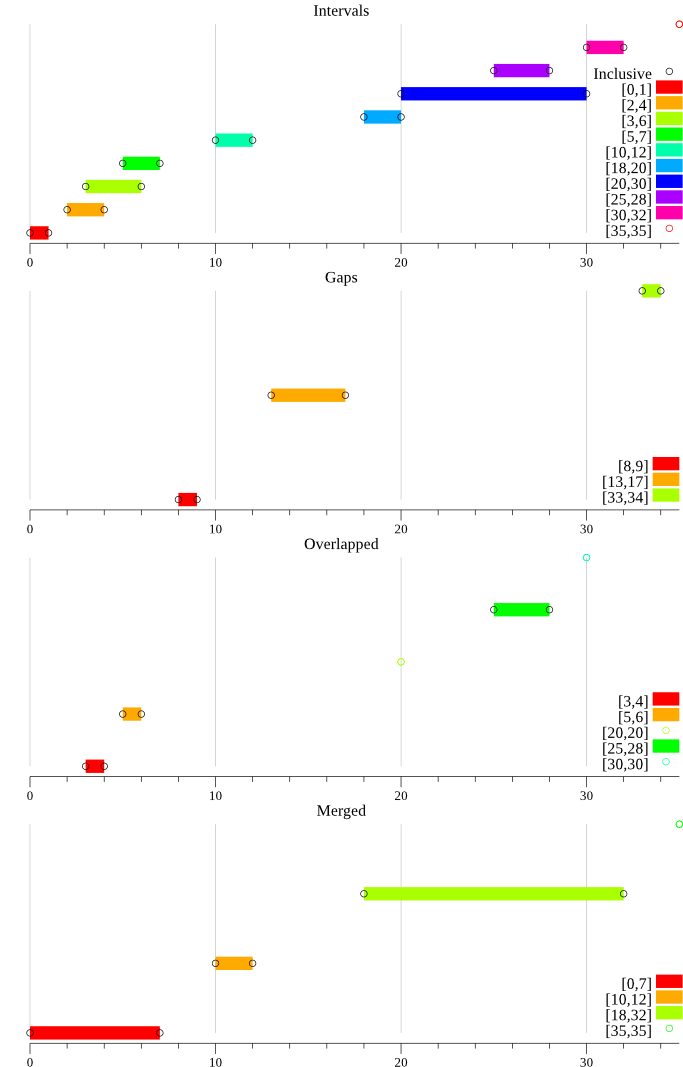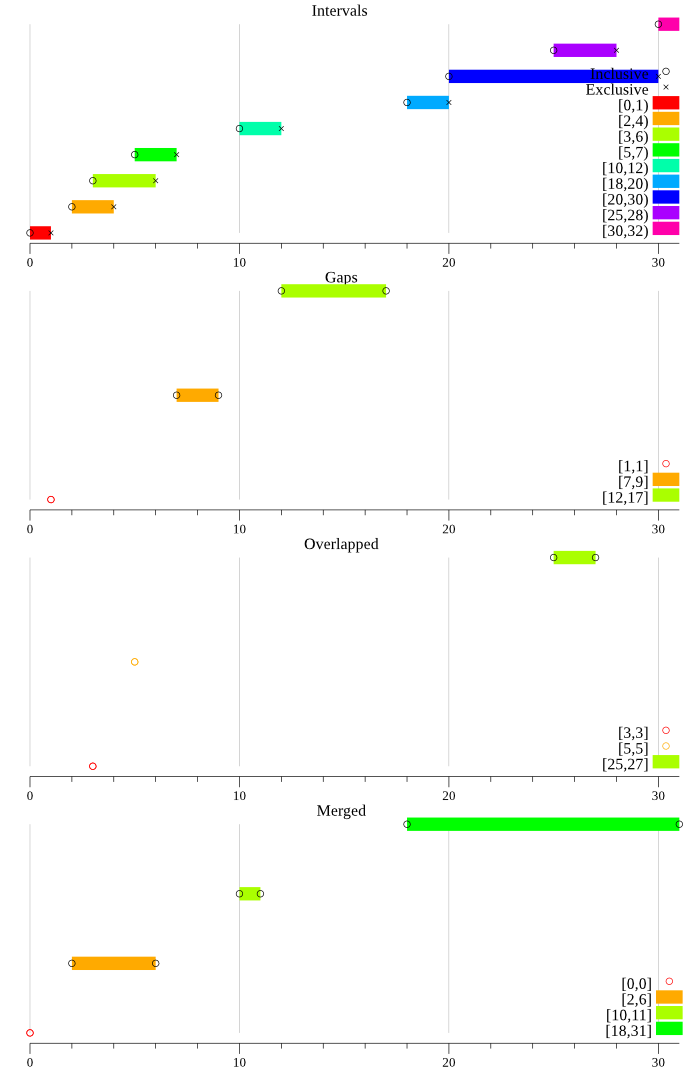5.2 KiB
intervals 


Provides a helper to work with integer intervals detecting gaps, merged and overlapped sections.
Installation
go get github.com/daniel-gil/intervals
Motivation
Why we need to have control over a list of intervals?
Because the API providers have their product prices depending on the age, so they assign a price amount to different age bands.
As a result we have a bunch of age bands (with its corresponding price) which can have:
- overlapping ages (due to an error entering the data).
- gaps in between age bands.
- different maximal age (for adult) depending on the provider (e.g. one can specify [18,99] and another [18-999] meaning the same).
- some providers do not create an age band for babies which has to be interpret as free entry, so we have a gap at the beginning.
So we need a mechanism to enter a list of age bands and be able to analyse it to take future actions.
Documentation
We define an interval as
type Interval struct {
Low int
High int
Object interface{}
}
where the Low and High values define a range and Object is any object to link to this range (in our case would be a Price object for the age band specified in the range).
API documentation is available on godoc.org.
Usage
Initialization
To use this package the first thing we have to do is create an instance:
intvls := intervals.New(minLow, maxHigh, lowInclusive, highInclusive, selfAdjustMinLow, selfAdjustMaxHigh)
where minLow and maxHigh are integers that defines the accepted integer space to work with, anything else outside will be rejected. The booleans lowInclusive and highInclusive indicates if the values of a range (low, high) are inclusive or not. The booleans selfAdjustMinLowand selfAdjustMaxHigh indicates that we do not need to specify the minLow or maxHigh in the constructor, but those values will be self adjusted automatically taking the lower and greatest value respectively of all intervals added.
Here some examples of inclusiveness:
- if both are inclusive for the interval [10, 17] means that a person with age 17 years old applies this interval
- if the low is inclusive and the high exclusive for the same example [10, 17) then a person with age 17 do not apply this interval, but a person with 10 does.
Add intervals
Once initialized, we can proced to add new intervals.
We can add intervals by passing an Interval object:
intvl := &intervals.Interval{Low: ageFrom, High: ageTo, Object: myObject}
err := intvls.AddInterval(intvl)
if err != nil {
fmt.Printf("invalid interval discarded: %v\n", err)
}
or directly the values Low, High and Object:
err := intvls.Add(low: ageFrom, high: ageTo, obj: myObject)
if err != nil {
fmt.Printf("invalid interval discarded: %v\n", err)
}
Get all intervals
Returns all the intervals added sorted by the Low integer value.
allIntervals := intvls.GetIntervals()
NOTE: any operation (get all, gaps, merge, overlap) apply a sort if needed.
Find value inside intervals
Given an integer value we can retrieve all intervals which cointain it
list := intvls.FindIntervalsForValue(tc.valueToFind)
Calculate gaps
Before getting the gaps, we could verify if exists any:
existsGaps := intvls.HasGaps()
Once we assure the gaps existance we can call Gaps(). This function scans all intervals searching for gaps in between and return a list of intervals corresponding to the gaps.
gaps := intvls.Gaps()
Calculate overlapping
Before getting the overlapped elements, we could verify if exists any:
existsOverlapping := intvls.HasOverlapped()
Once we assure the existance overlapping we can call Overlapped(). This function scans all intervals searching for overlapping in between and return a list of intervals corresponding to the overlaped sections.
overlapping := intvls.Overlapped()
Calculate merging
If we join together all the intervals we can fusion all them and as a result we will get a list of intervals merged, this is what the function Merge does:
merging := intvls.Merge()
Example
There is a complete example under the /example/ folder in the source code that shows how the package is used.
Output:
go run ./example/main.go
The following image is an example where lowInclusive and highInclusive are both true:
The next image is another example where lowInclusive is true but highInclusive is false:
References
License
This project is under the MIT License.

